Endling – Extinction is Forever combines elements from adventure, survival, and narrative videogames to tell the story of a mother fox shepherding her four cubs through a world collapsing beneath selfish people’s careless destruction. Over the course of many brief nights, the mother fox explores a small open world for food and shelter to provide for her offspring. If she succeeds, she will grant them one more precious day of survival. If she fails, it will mean much more than the tragic death of her family. It’s an evocative and tragic story that pushes a message more than entertainment—and this isn’t a bad thing.
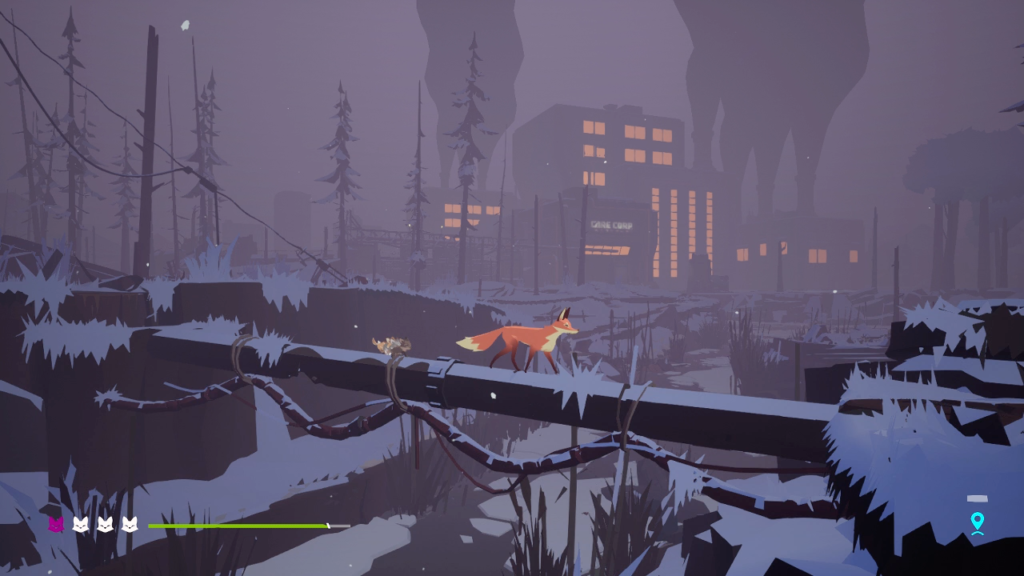
Each night, a fox family emerges from their den into the crisp, dark world and I begin to explore as their mother. Nights last about five real-time minutes, and in that period I must find enough food to keep the cubs fed while protecting them from the world’s dangers—primarily, people—before returning to the den to sleep through another long day.
In the first few days, food is abundant. Fruit grows on bushes and dangles from trees, birds’ nests on high branches contain nutritious eggs, and plump rats scurry between patches of undergrowth. As the nights drag on and people begin to impose their presence on the landscape, food becomes more and more scarce. By the final nights leading to the inevitable ending I resort to clawing through refuse piles for just enough food to keep the cubs from starving.
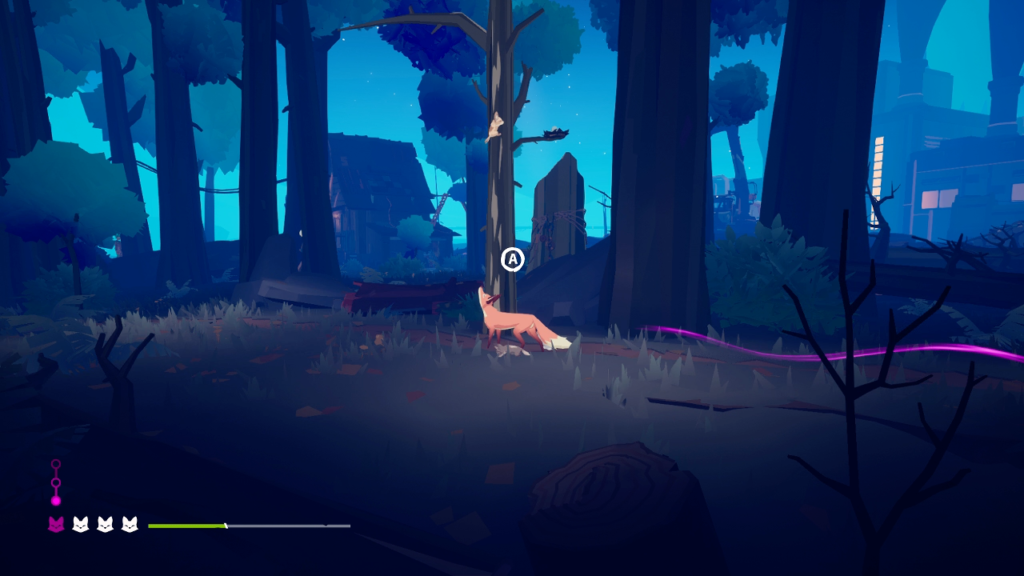
The world where I scavenge this food is primarily a sandbox, but it does not develop in a typical manner. I am given free rein to explore a tangle of interconnecting paths surrounding the family’s den, encompassing a small wetland and forest alongside a manufacturing plant and chicken factory. In a few unique locations, one of the fox cubs will overcome a particular obstacle and learn a new ability—to climb to a low tree branch, explore a small opening in a wall, or dig into soft earth—but these do not act as keys to locks that open new paths. Instead they reveal hidden food sources which become more and more necessary as the obvious ones are depleted. When new paths are opened and the sandbox’s boundaries are widened, it is usually a result of the people’s influence.
The fox and her family start out sheltering beneath a radio tower in a wetland. It’s a generous place to learn how to scrounge for food during Endling’s opening moments. Even sharing the wetland with a territorial badger and a fisherman, there is plenty of food for everyone, especially in the form of tasty fish who laze in the shallow water. But soon people begin to encroach on the wetland. The radio tower is disassembled into scraps to build a shanty town. Garbage chokes the streams, the fish disappear, and the badger is captured by a hunter.
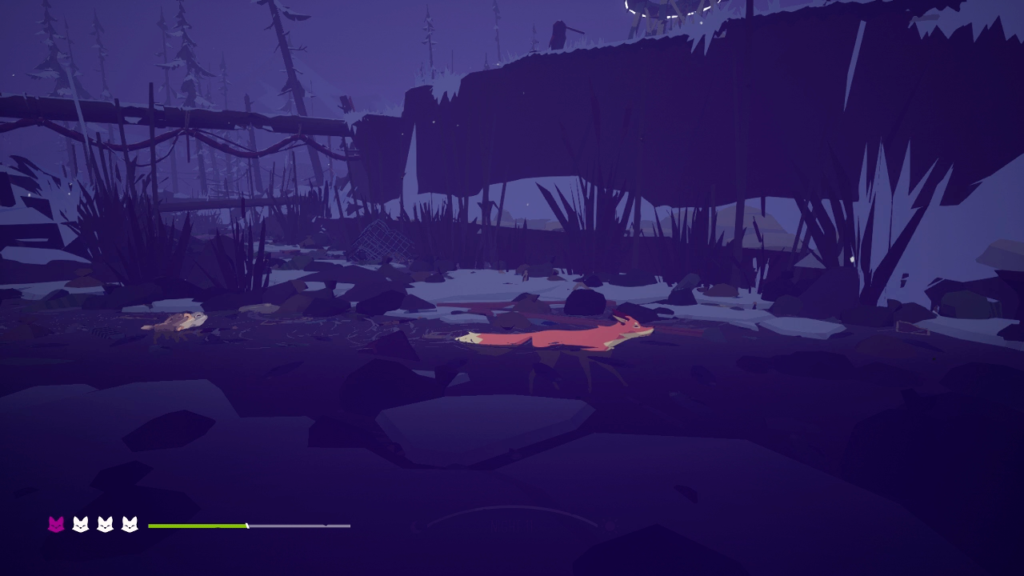
The transformation of the wetland creates a path to a nearby copse, where the fox family makes a new den in the rusted-out engine of an old plane. For a few nights food is easier to find again. But then people arrive, cutting the trees down to expand their shantytown and the whole thing happens all over again. As the story reaches its conclusion, the only places left to find food are the people’s shabby settlements and the factories where they labor creating their ugly, pointless things.
Endling has one other goal besides survival. A few days after the family arrives in the wetland, one of the fox cubs is lured out of the den by a hunter and captured. Despite the mother’s best efforts to pursue, she loses track of the hunter in the winter snow. Every few nights following this heartbreaking encounter, a special red scent trail appears outside the den. If I follow this trail to its conclusion, I witness faint memories of the hunter’s plans for the cub.
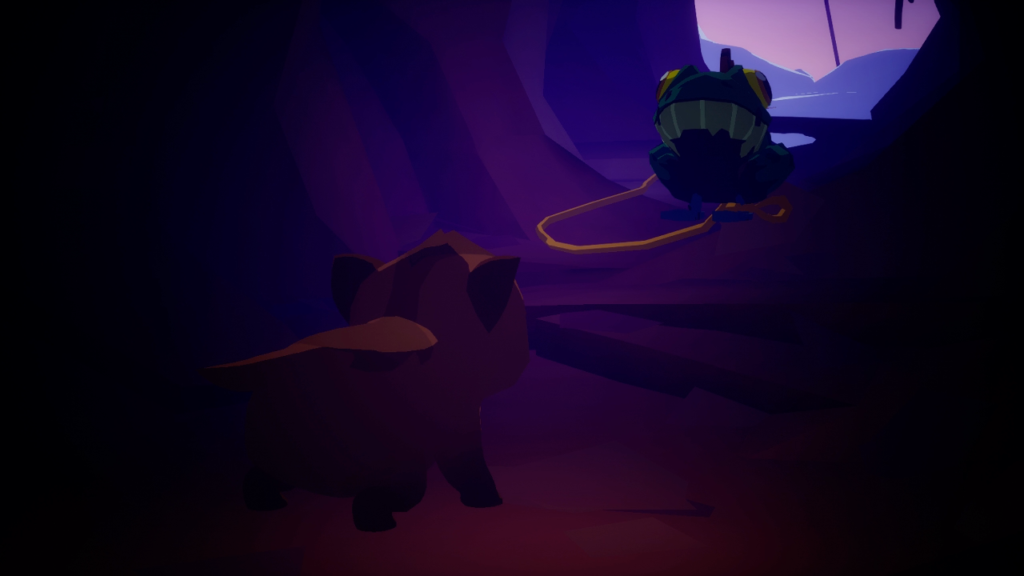
The nights these red scent trails appear are the most challenging as I must balance following the stolen cub with keeping the other cubs protected and fed. Adding another task to the fox mother’s nightly ordeals is made further difficult by the path often marching through the most dangerous parts of the map where deadly guard dogs patrol, protecting the people’s most frivolous endeavors.
Following the stolen fox cub’s story signposts progression, certain portions of the map not opening until I have followed enough red scent trails to their conclusion. When I have followed them all, the fox family is transported to their ending.
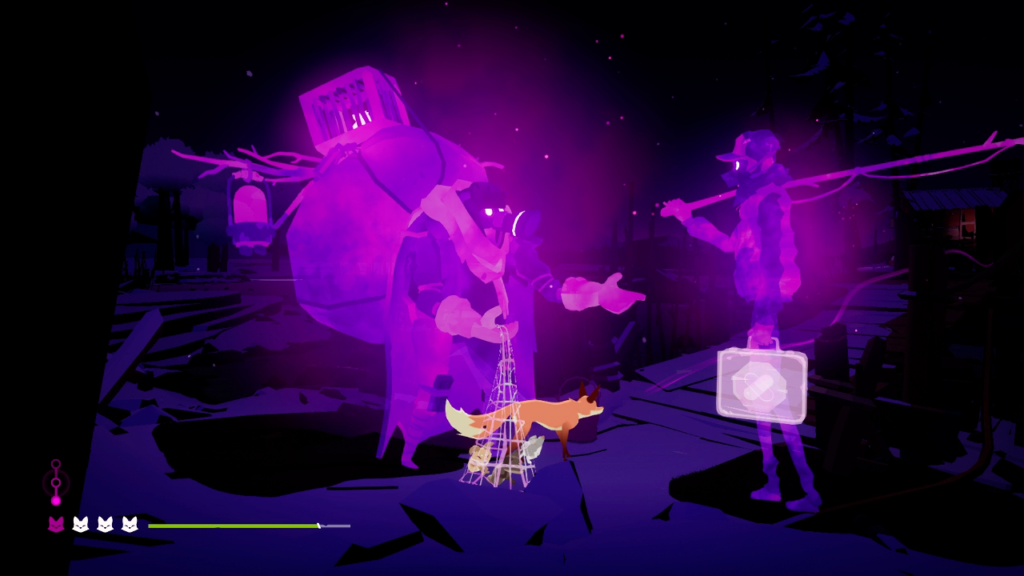
There’s a particular genre of “animal adventure tearjerkers” that Endling fits squarely into, so I don’t think it’s a spoiler to say it culminates in the kind of manipulatively emotional conclusion these stories often exploit. Though I can feel a tingling of annoyance as the story’s final minutes build to that moment, when I reach it I am still brought to tears. It proves that art can get away with being predictable when it’s also being effective, and Endling is effective. It’s a short videogame that drives its point home with the subtlety of a dead mother surrounded by her weeping children.
Despite how emotionally effective this final image is, I do feel its predictability deadens Endling’s point. It is meant to be the stark exclamation point writ in blood to a thesis statement: People are destructive. They are bad for the environment. They are bad for wildlife. They are bad for each other. When I already know that ending is coming solely from my understanding of the premise, it makes the exclamation less effective. Endling is a victim of its own ecosystem here—it’s simply impossible to be surprised by this ending at this point in mass media—but it by no means makes its point less valid. If only the ending could somehow become fresh and new, it might sway those not already in agreement.
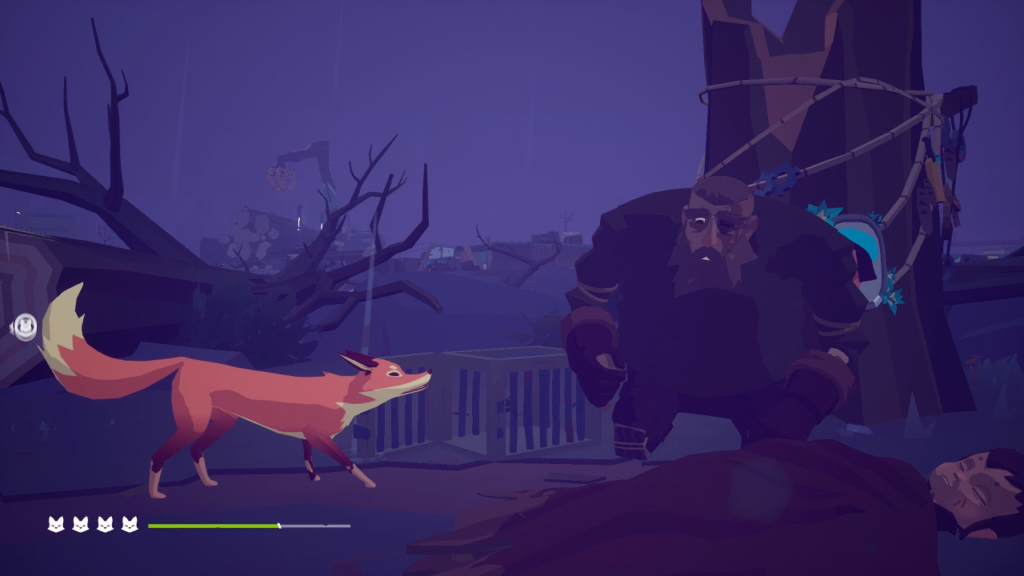
Endling – Extinction is Forever effectively employs adventure and survival videogame mechanics to make its pro-environmentalism points. Spending short nights scavenging for food in a steadily-worsening environment imposes a heavy point upon the player’s conscience, but these same short nights keep the pressure manageable and the sense of forward momentum high. Its most impressive points from a technical perspective is the changing landscape, often transforming itself in a single day as the people work while the foxes sleep. Only its ending is a narrow disappointment. While it’s emotionally devastating, it’s also textually predictable, and that deadens the overall point Endling is trying to make. It’s an affecting experience for those in a choir seeking a preacher, but will do little to sway the apathetic or the malignant.